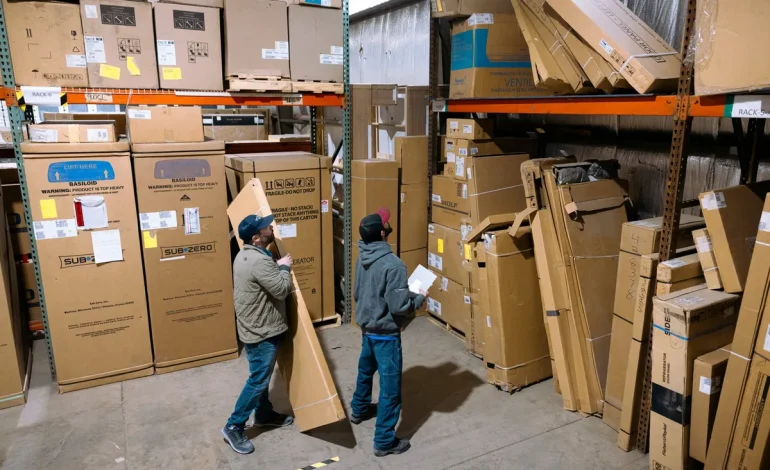American manufacturers are experiencing supply challenges reminiscent of the COVID-19 pandemic, as tariffs and trade tensions continue to disrupt supply chains and delay deliveries.
While the pandemic was driven by a health crisis, current obstacles stem from escalating trade wars and tariff policies that have unsettled global manufacturing.
Factories across the US report longer wait times for critical materials, rising prices, and increased difficulties securing essential components. Automakers in particular have warned of supply shortages severe enough to temporarily halt production lines. For example, a Ford factory near Chicago paused operations recently after running out of rare earth magnets—key parts needed for vehicle components like headlights and steering systems.
Despite these supply chain struggles, demand has notably softened. New manufacturing orders are declining at rates not seen since the pandemic began, a sign of weakening consumer demand rather than the typical delivery delays caused by booming orders. This unusual combination signals economic uncertainty, experts say.
Trade tariffs, initially intended to revitalize US manufacturing, have instead contributed to these disruptions. Many suppliers are delaying shipments or racing to import goods before new tariff deadlines. Customs clearance times have slowed, and businesses often debate who should bear the added costs from tariffs.
China’s restrictions on rare earth element exports—materials crucial to various manufacturing sectors—have added another layer of complexity. The country dominates global production of these minerals and magnets, limiting alternatives for US manufacturers. Efforts to diversify supply chains domestically have yet to alleviate these dependencies.
Economic indicators highlight the broad impact of these issues. The Institute for Supply Management (ISM) recently reported supplier delivery times at their slowest in two years, while prices paid by manufacturers reached a 2½-year high. The ISM’s services index also slipped below the expansion threshold for the first time in nearly a year, signaling contraction in a sector that has long driven economic growth.
While the White House recently eased some tariffs to ease economic pressures and facilitate trade negotiations, the lingering effects of trade disputes continue to dampen manufacturing activity. Experts caution that even if tariffs were removed immediately, supply chains will take significant time to untangle and recover.
As negotiations between the US and China continue, including anticipated talks between President Trump and President Xi Jinping, the resolution of trade and mineral export issues remains critical. Treasury Secretary Scott Bessent has emphasized the need to “de-risk” economic ties with China without fully decoupling.
With input from Bloomberg, Market Watch, and Axios.










The latest news in your social feeds
Subscribe to our social media platforms to stay tuned